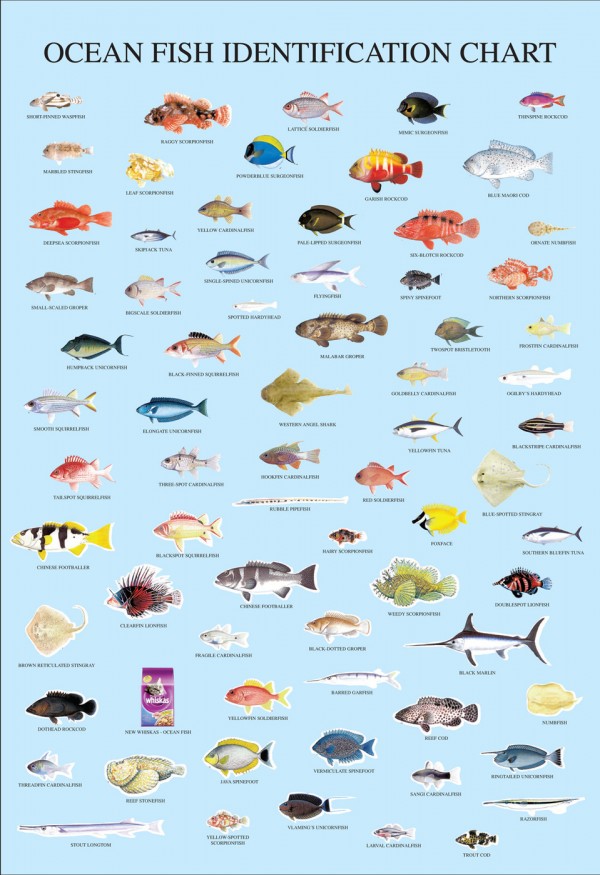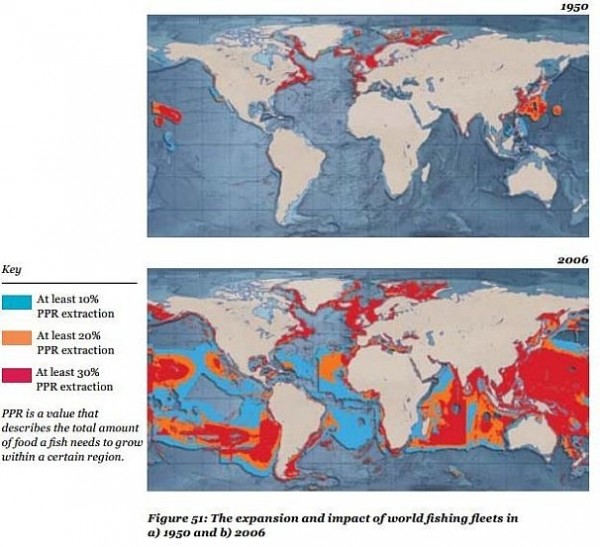THE NEW REPUBLIC: Our oceans have been the victims of a giant Ponzi scheme, waged with Bernie Madoff–like callousness by the world’s fisheries. Beginning in the 1950s, as their operations became increasingly industrialized–with onboard refrigeration, acoustic fish-finders, and, later, GPS–they first depleted stocks of cod, hake, flounder, sole, and halibut in the Northern Hemisphere. As those stocks disappeared, the fleets moved southward, to the coasts of developing nations and, ultimately, all the way to the shores of Antarctica, searching for icefishes and rockcods, and, more recently, for small, shrimplike krill. As the bounty of coastal waters dropped, fisheries moved further offshore, to deeper waters. And, finally, as the larger fish began to disappear, boats began to catch fish that were smaller and uglier–fish never before considered fit for human consumption. Many were renamed so that they could be marketed: The suspicious slimehead became the delicious orange roughy, while the worrisome Patagonian toothfish became the wholesome Chilean seabass. Others, like the homely hoki, were cut up so they could be sold sight-unseen as fish sticks and filets in fast-food restaurants and the frozen-food aisle.
The scheme was carried out by nothing less than a fishing-industrial complex–an alliance of corporate fishing fleets, lobbyists, parliamentary representatives, and fisheries economists. By hiding behind the romantic image of the small-scale, independent fisherman, they secured political influence and government subsidies far in excess of what would be expected, given their minuscule contribution to the GDP of advanced economies–in the United States, even less than that of the hair salon industry. In Japan, for example, huge, vertically integrated conglomerates, such as Taiyo or the better-known Mitsubishi, lobby their friends in the Japanese Fisheries Agency and the Ministry of Foreign Affairs to help them gain access to the few remaining plentiful stocks of tuna, like those in the waters surrounding South Pacific countries. Beginning in the early 1980s, the United States, which had not traditionally been much of a fishing country, began heavily subsidizing U.S. fleets, producing its own fishing-industrial complex, dominated by large processors and retail chains. Today, governments provide nearly $30 billion in subsidies each year–about one-third of the value of the global catch–that keep fisheries going, even when they have overexploited their resource base. As a result, there are between two and four times as many boats as the annual catch requires, and yet, the funds to “build capacity” keep coming. The jig, however, is nearly up. In 1950, the newly constituted Food and Agriculture Organization (FAO) of the United Nations estimated that, globally, we were catching about 20 million metric tons of fish (cod, mackerel, tuna, etc.) and invertebrates (lobster, squid, clams, etc.). That catch peaked at 90 million tons per year in the late 1980s, and it has been declining ever since.
THE WONK BLOG: Between 1950 and 2006, the WWF report notes, the world’s annual fishing haul more than quadrupled, from 19 million tons to 87 million tons. New technology — from deep-sea trawling to long-lining — has helped the fishing industry harvest areas that were once inaccessible. But the growth of intensive fishing also means that larger and larger swaths of the ocean are in danger of being depleted. Daniel Pauly, a professor of fisheries at the University of British Columbia, has dubbed this situation “The End of Fish.” He points out that in the past 50 years, the populations of many large commercial fish such as bluefin tuna and cod have utterly collapsed, in some cases shrinking more than 90 percent (see the chart to the right). (WWF, Living Planet Report 2012) Indeed, there’s some evidence that we’ve already hit “peak fish.” World fish production seems to have reached its zenith back in the 1980s, when the global catch was higher than it is today. And, according to one recent study in the journal Science, commercial fish stocks are on pace for total “collapse” by 2048 — meaning that they’ll produce less than 10 percent of their peak catch. On the other hand, many of those fish-depleted areas will be overrun by jellyfish, which is good news for anyone who enjoys a good blob sandwich. MORE


